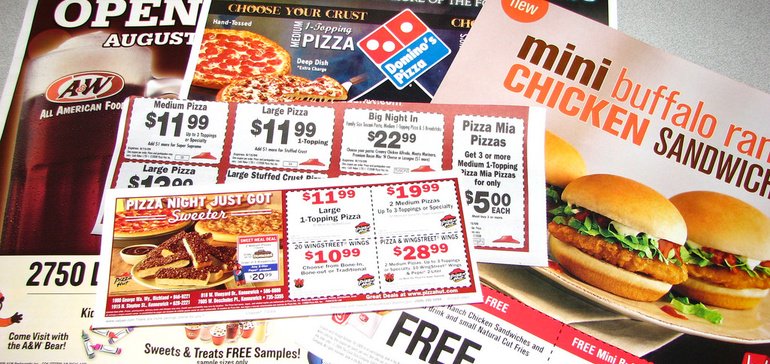Dive Brief:
- Consumers saved $3.1 billion in coupons last year, but overall coupon redemption dropped due to marketers’ overemphasis on digital distribution, according to a press release announcing a study from NCH Marketing Services, a subsidy of media intelligence platform Valassis.
- Marketers increased the overall digital distribution of coupons by 27% to match consumers’ shift toward mobile and online, contributing to an additional 47% in paperless coupon redemption. However, that category made up less than 12 share points of all coupons redeemed in 2017, and did not make up for the shift away from marketers’ other distribution strategies.
- Free standing inserts (FSI) remain the predominant channel to reach consumers, as it made up nearly 94% of coupon distribution volume and was the category with the highest redemption volume, the study found. Coupons that appear alone on a page show a 17% higher redemption rate than those sharing an FSI page.
Dive Insight:
Marketers appear to have missed key opportunities last year in their race to reach consumers via digital. By spreading their coupon delivery methods too thin, as the study suggests, marketers likely lost out on chances to boost brand buzz and sales via coupons, while overemphasizing mobile and online coupons. While consumers are quickly gravitating toward digital platforms and media, marketers haven’t yet found the right balance of print and digital to optimize their results.
Delivering the right coupon to the right consumers at the right time via the right channel has been an ongoing struggle for marketers. The challenge is growing as more platforms and opportunities emerge for marketers to connect with their target customers. Further complicating matters are “a changing retailer landscape, shifting consumer product preferences and value-seeking shopping behaviors across the path to purchase,” Charlie Brown, NCH’s vice president of marketing, said in a statement.
Coupons continue to impact many consumers’ purchasing decisions, no matter how or where they are delivered. More than 60% of shoppers are influenced by coupons for grocery purchases, according to data included in the NCH study. But, there has been an increase in non-food coupons, with nearly 70% of all consumer packaged goods coupon focusing on items like over-the-counter health products and household products.
Successful coupon strategies rely on insights into consumers’ shopping and spending habits, while also targeting key consumers with personalized discounts and promotions for products and services that they’d likely buy and enjoy. More marketers are experimenting with chatbots to deliver real-time offers to consumers on mobile devices at they approach a store or certain item in a store. Digital coupon redemption is predicted to jump 94% by 2022, according to a Juniper Research forecast. Within five years, 80% of coupons could be redeemed on a mobile device, and chatbot coupon volume will rise from 25 million to 1.1 billion, signaling that marketers should continue developing ways to connect with consumers and deliver targeted coupons via mobile and online channels.

